A light cable passes over a frictionless pulley support a 50 kg block as shown. Determine the velocity of the block after it has moved 5 m from rest. Neglect the inertia of the pulley.
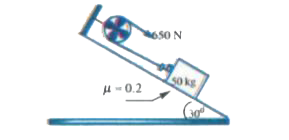
The correct Answer is:8 m/s
Similar Questions
The system is released from rest with the spring initially stretched 75mm. Calculate the velocity v of the block after it has dropped 12mm. The spring has a stiffness of 1050N/m. Neglect the mass of the small pulley.
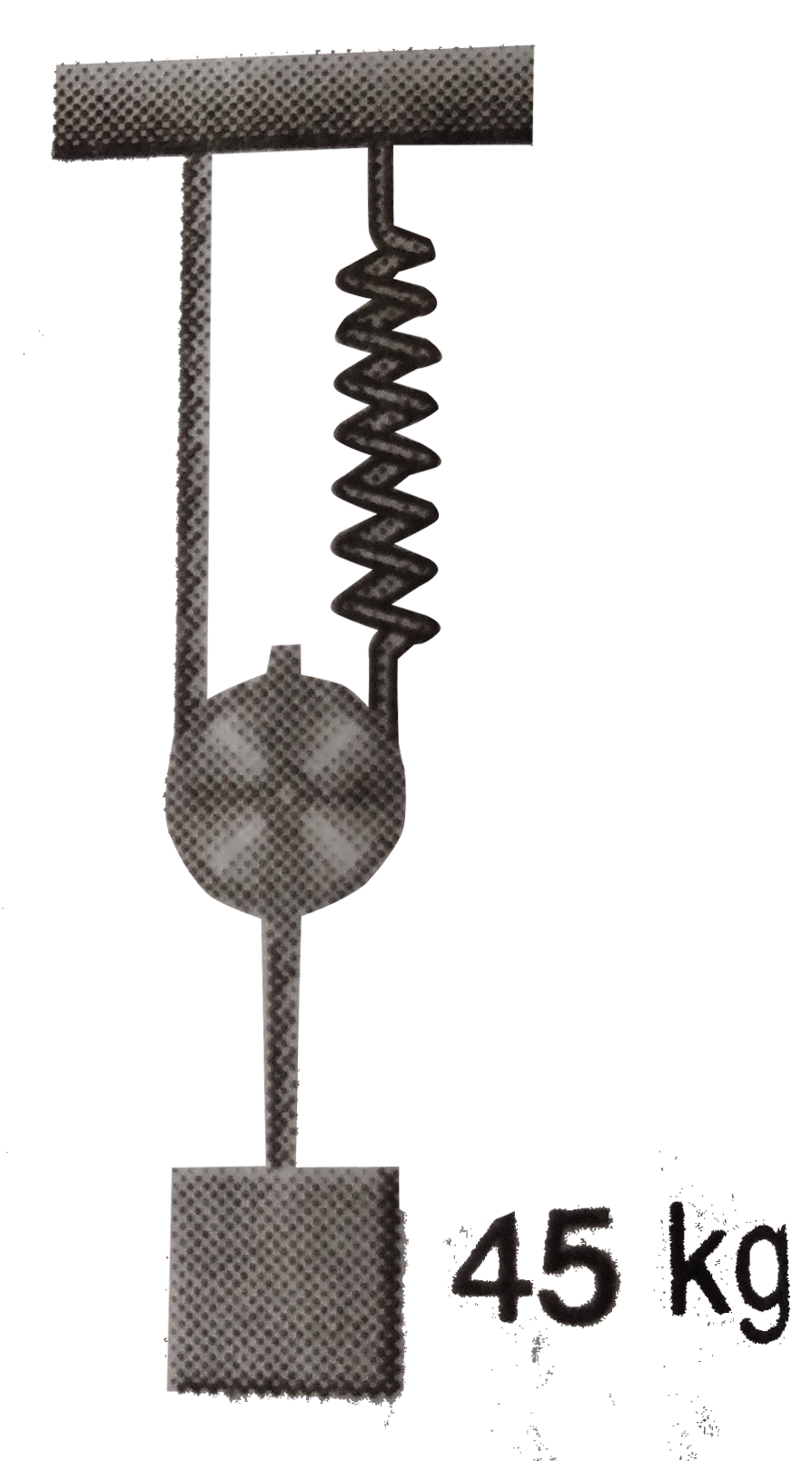
View SolutionTwo 100 g blocks hang at the ends of a light flexible cord passing over a small frictionless pulley. A 40 g block rests on the block an right and removed after 2 sec.
(a) How far will each block move in the first second after the 40 g block is removed?
(b) What was the tension in the cord before the 40 g block was removed?
(c) What was the tension in the cord supporting the pulley after the 40 g block was removed?
View Solution
Knowledge Check
A 20 kg block placed on a level frictionless surface is attached to a cord which passes over two small frictionless pulleys,as shown in figure-2.167,to a hanging block originally at rest 1m above the floor. If the hanging block strikes the floor 2 s after the system is released, the weight of the hanging block is :
 A3.5 NB5.27 NC5.4 ND10.54 N
A3.5 NB5.27 NC5.4 ND10.54 NA block of mass m1 rests on a rough horizontal plane with coefficient of friction as μ. A light strin attached to this block passes over a light frictionless pulley and carries another block of mass m2 as shown in figure. If the system is just about to move, then find the value of μ.
 Am2cosθm1−m2sinαBm1sinαm1−m2sinαCm2cosαm1+μ2sinαDm1sinαm1+m2sinα
Am2cosθm1−m2sinαBm1sinαm1−m2sinαCm2cosαm1+μ2sinαDm1sinαm1+m2sinαA string of negligible mass going over a clamped pulley of mass m supports a block of mass M as shown in the figure. The force on the pulley by the clamp is given by
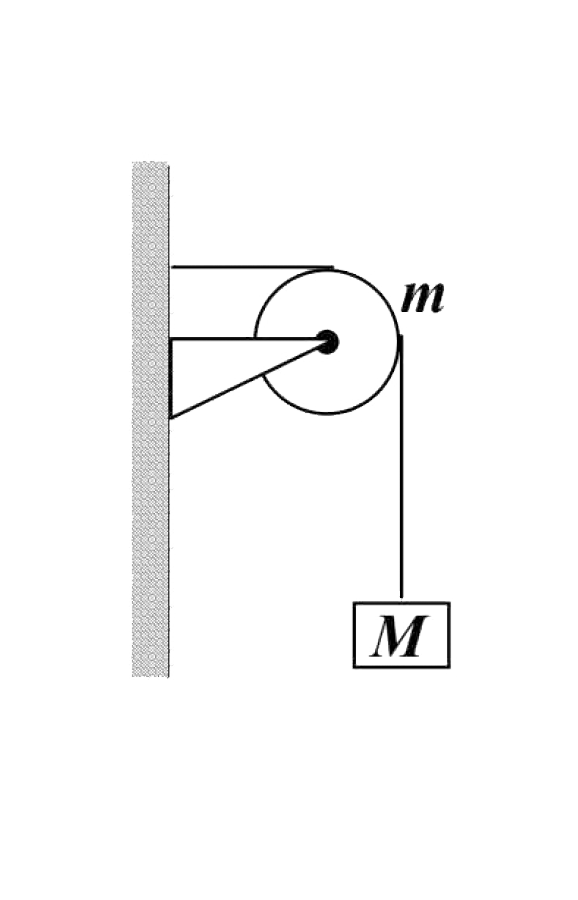 A√2MgB√2mgC√(M+m)2+m2gD√(M+m)2+M2g
A√2MgB√2mgC√(M+m)2+m2gD√(M+m)2+M2g
Four blocks are connected with a.string passing over a frictionless pulley fixed at the corner of a table as shown in figure. The coefficient of static friction of A with table is 0.50. The minimum mass m of the block, so that blocks do not move should be ...... kg.
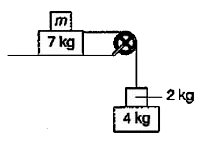
View SolutionIf the system is released from rest, determine the speeds of both masses after B has moved 1 m. Neglect friction, the masses of pulleys and inextensible string.
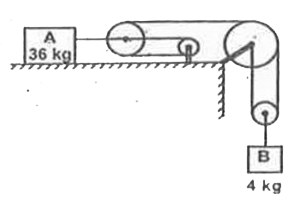
View SolutionIf the system is released from rest, determine the speeds of both masses after B has moved 1 m. Neglect friction, the masses of pulleys and inextensible string.

View SolutionA string of negligible mass going over a clamped pulley of mass m supports a block of mass M as shown in the figure. The force on the pulley by the clamp is given by
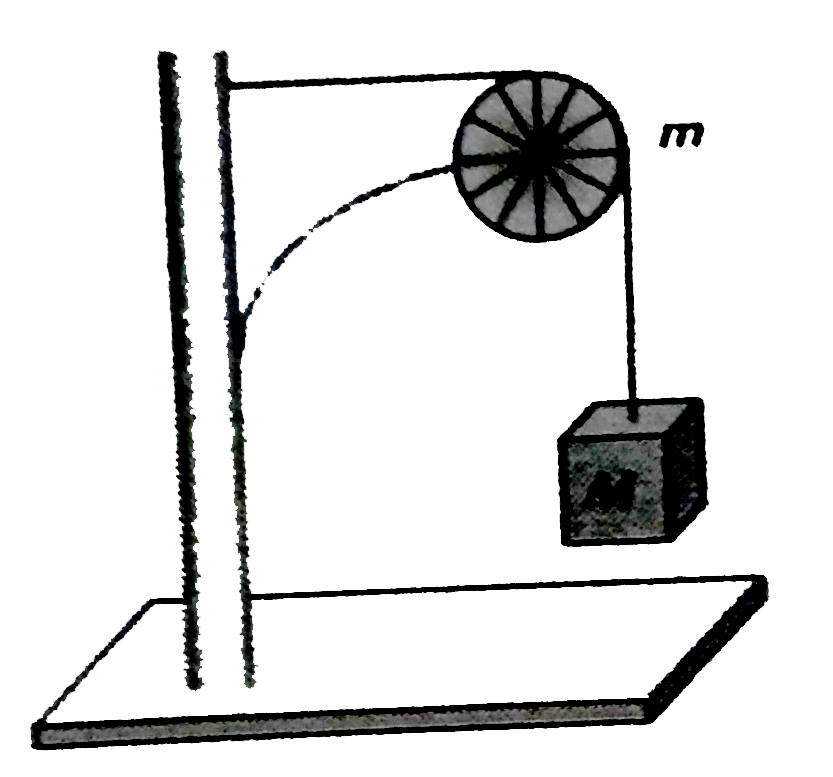
View SolutionA mass string going over a clamped pulley of mass m supports a block of mass M as shown in the figure. The force on the pulley by the clamp is given
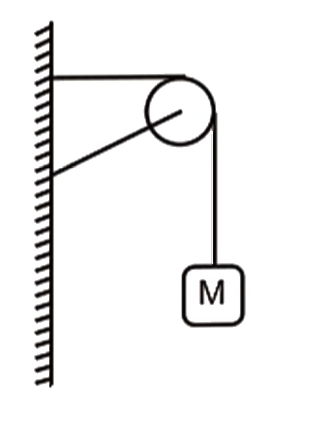
View Solution
